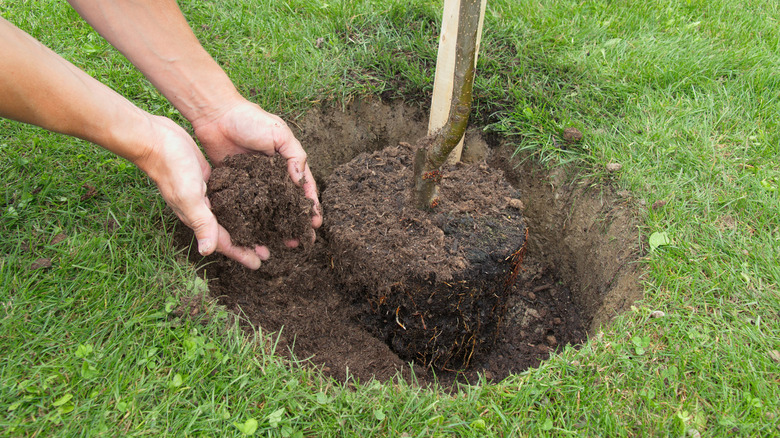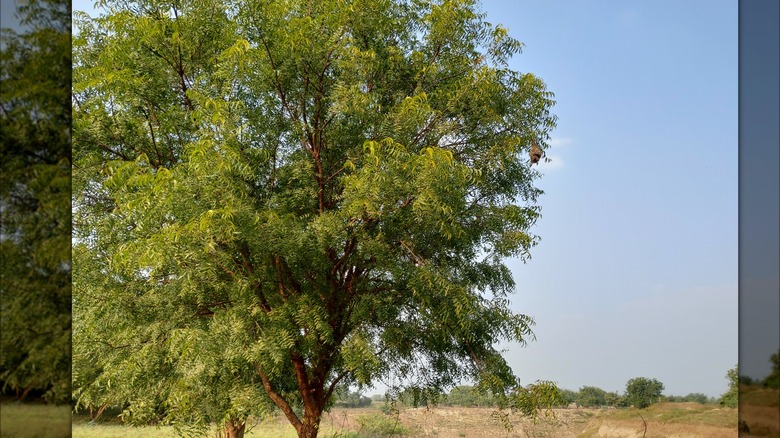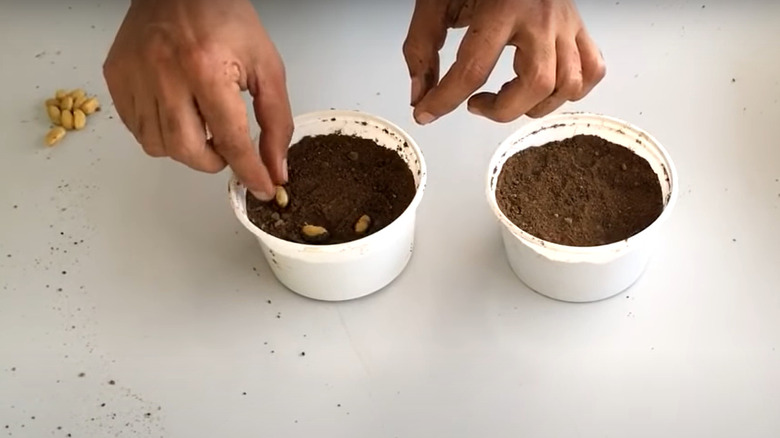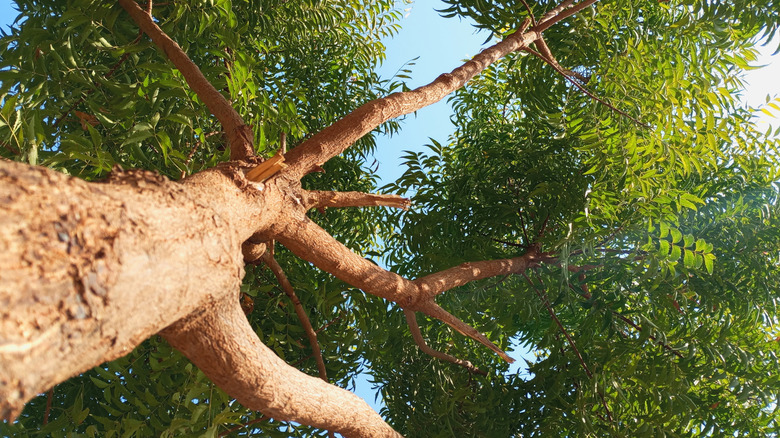The Fast-Growing Tree You'll Want To Plant In Your Yard For All Of Its Benefits
We may receive a commission on purchases made from links.
People have planted neem or margosa trees (Azadirachta indica) for centuries to reap innumerable benefits. Their seeds are pressed to extract neem oil, a broad-spectrum pesticide known to repel and suffocate young pests, including caterpillars, beetle larvae, mealy bugs, aphids, whiteflies, and thrips. You might've even used it to stem the spread of powdery mildew on your plants. The residual seedcake (after oils are squeezed out) serves as a nematicide and fertilizer, enriching soils with nitrogen, calcium, potash, magnesium, and phosphorus. Many use their durable lumber to make charcoal or furniture.
Neem trees' dried leaves are used as fodder and moth repellents. They're also believed to lower soil acidity. Some birds relish their fruit, minus the seed, which works well if you're looking for seeds to propagate neem trees. However, their biggest advantage lies in their shade-giving property, thanks to their rounded crowns. Growing over 50 feet tall, margosa trees support wide-spreading, hairless branches of asymmetric, toothed, evergreen leaves that easily withstand sun, wind, and drought. The foliage makes way for sweet-scented, tiny, white flowers that later house olive-green to purplish edible seeds that become fully ripe in 12 weeks. Plus, they root deeply, fighting off soil erosion.
Favorable growth conditions for neem trees
Being native to the tropical Indian subcontinent, neem trees thrive where ambient temperatures don't dip below 40 degrees Fahrenheit anytime throughout the year. They also prefer full sun but make do with partial shade. That's why, when grown outdoors, they're only suitable for zones 10 to 12. However, cold-climate dwellers can grow them indoors in containers with some artificial lighting. But be ready to prune the trees frequently, or they might become unwieldy.
Margosa trees aren't fans of silky and loamy soils; they perform best in deep, well-drained sandy soils. They abhor wet feet, so don't overwater them. Fortunately, they're pretty drought-tolerant, explaining why they're a go-to reforesting choice in some of the world's driest regions (like the Sahel). So, it's okay to err on the side of underwatering them. However, container gardeners can't be as carefree, as neem plants lose their drought resistance indoors. Water them when the soil feels dry. Don't forget to feed them a balanced, water-soluble fertilizer monthly, especially if you plan to harvest their parts. Prune early in the spring to promote healthy growth.
Planting neem trees
Although there are multiple ways to propagate new neem trees, it's easier to seed them directly in your yard or transplant seedlings. If you or a friend have a neem tree around, pick up the dropped fruit, wet it, and rub away its pulp to reveal white seeds. Alternatively, buy a seed pack online or from a garden center, but ensure it isn't older than 2 to 6 months, as neem seeds quickly become unviable.
If you wish to plant neem in a container, take a 3-gallon pot and fill it with a well-draining potting mix. Avoid using garden soil, as it may harbor diseases. Similarly, skip commercial mixes containing water management polymers because they may retain excessive water. Sow the seeds 1 inch deep, or as the label recommends. Apply a 20-20-20 fertilizer monthly in the initial growth year and water regularly. Use a heat lamp for a few hours if sunlight is insufficient. As neem trees grow about 8 feet yearly, you'll have to repot them until they're fully established.
If you buy nursery-grown seedlings, plant them in a pot to acclimate them. In the initial days, expose them to the morning sun, but keep away from strong winds, and water them well. Spray the foliage with a diluted fish emulsion if it begins wilting. Come spring, plant them in the ground after mulching the soil and feeding it citrus tree fertilizer.
Maintenance, troubleshooting, and other tips to keep your tree healthy
Once your tree is planted and growing, it will need some maintenance to avoid the common mistakes everyone makes when growing neem trees. Trees grown in the ground will need regular pruning for the first few years to ensure they grow upright and strong. Established trees can be trimmed in the spring and fall to encourage new growth. Container plants will need more extreme pruning to stay compact. Fortunately, these trees are extremely tough and respond well to heavy-handed cuts.
Young trees may need weekly watering, but mature trees do not like soggy soil and may not need supplemental watering at all. Container-grown trees will dry out more quickly, so water them deeply after the soil has had a chance to dry out. House Digest's Master Gardener Tiffany said in an exclusive interview, "Potted neem trees should be fertilized monthly while they are actively growing outdoors. When they are brought in for the winter, new growth will slow or stop. They should not be fertilized during this dormancy period." She advised that a high-quality fertilizer for shade trees, like Espoma Organic Tree-tone, should be used. You might think a tree grown as a natural pesticide would be free of pest issues, but they are susceptible to scale insect infestations. So, keep an eye out for these tiny pests and treat your tree as needed.



